Carondelet Park
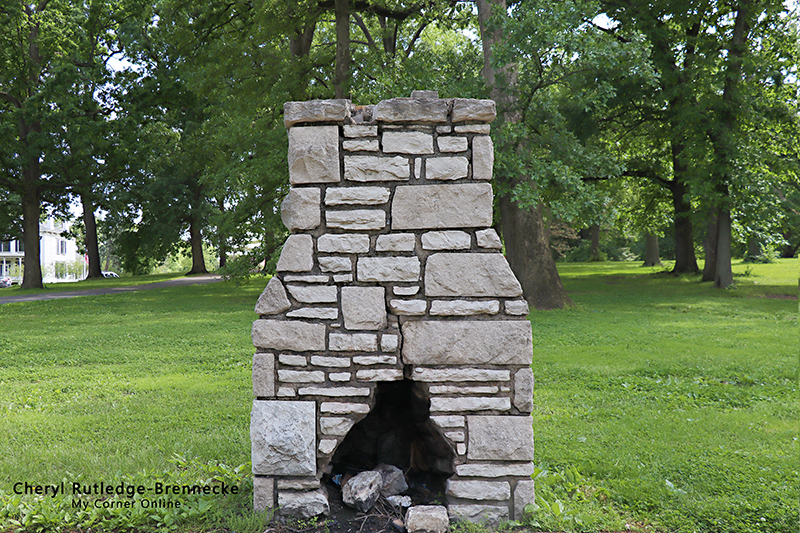
On May 24, 2002, we had a little extra time and decided to visit Carondelet Park in the St. Louis area. I have discovered that I have an ancestor who grew up here, so I want to learn more about the area. After research later, I discovered that this park was not even present when my ancestor lived here in the early 1800's (and earlier). This park was established in 1875. The city of Carondelet was founded 1767. Therefore, I need to go back some day and explore more down by the Mississippi River's edge in Carondelet.
The Covid-19 pandemic was full underway and when we arrived, the streets into the park were closed. I think the park was closed to outside visitors, but open to those in the neighborhood that could walk there. We decided to park on the outer road and walk in anyway. The first thing we saw was this chimney without a building and I wonder what its story told.
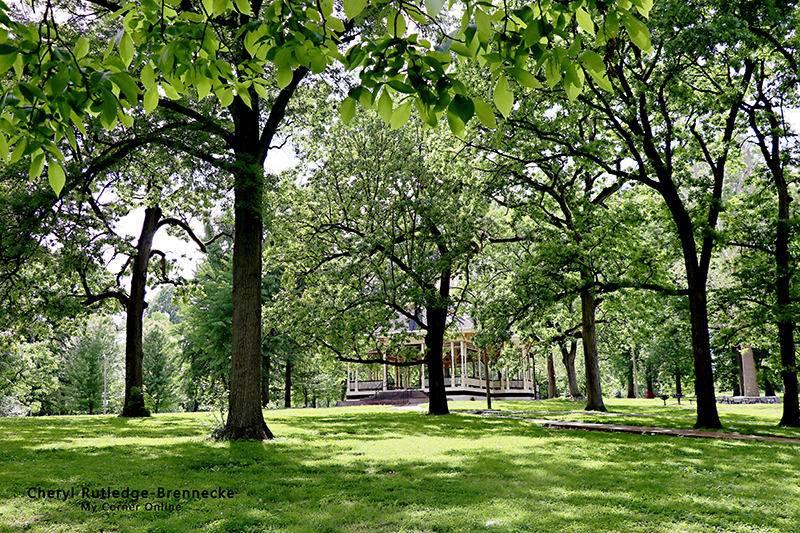
We walked across the beautiful green grass and tree with this building in the distance. I remember enjoying the canopy of trees unfolding above me.
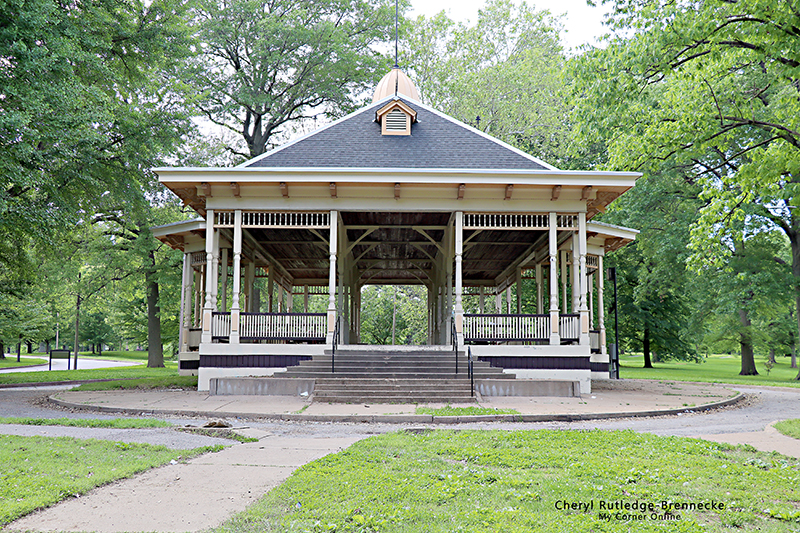
I read that this is Carondelet Pavilion #1. It is rather majestic and long like a train station to walk through. I could imagine ladies in old-time dresses standing about. I wanted to know more about this structure, but I do not see much online.
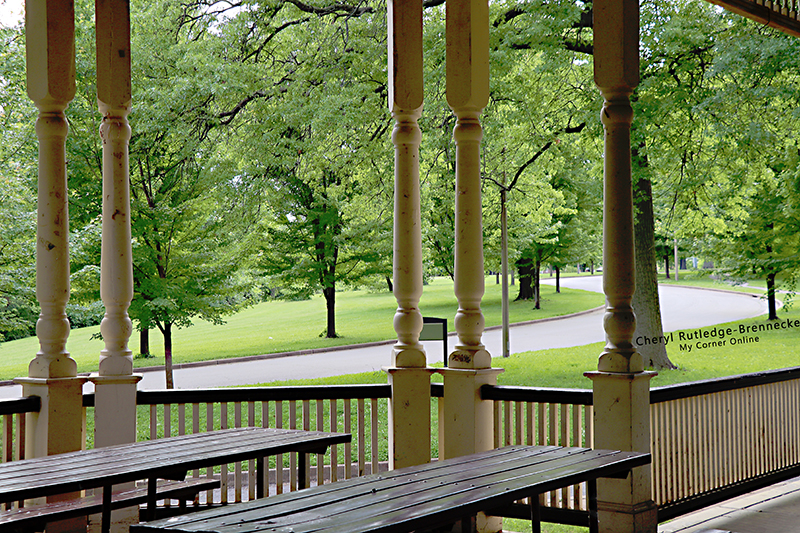
Inside the Carondelet Pavilion #1 the view out was just a beautiful. Also inside were homeless folks. I wonder if they felt intimidated by us. I felt as if most people would have avoided the experience of walking through, but I have had in the last five years or so experiences with homeless folks, so they did not intimidate me as much as they once might have. I wondered if the city has difficulties keeping them from sleeping here. I wanted to talk to them, but decided silence was best. I just felt their stares on me.
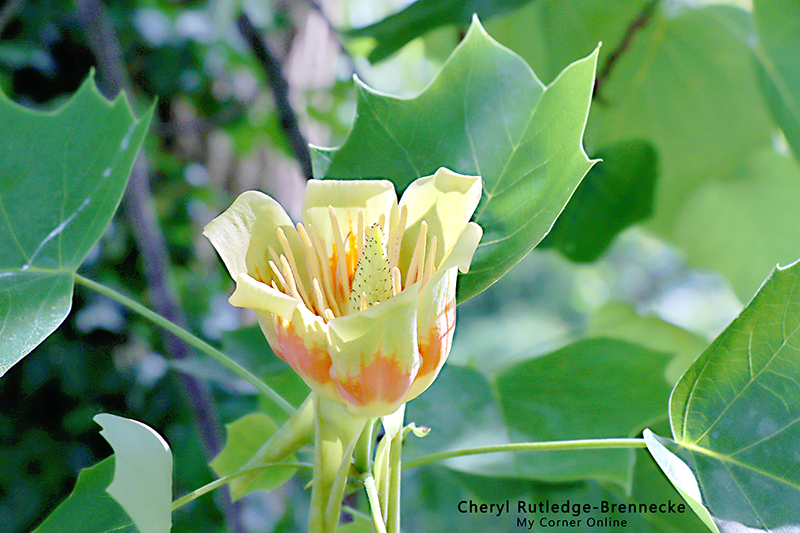
We continued walking through the park. I felt we had a better experience with it being empty due to Covid than bustling with people. I delighted in these flowers in the trees. I believe they are tulip poplar tree blooms. They were everywhere!
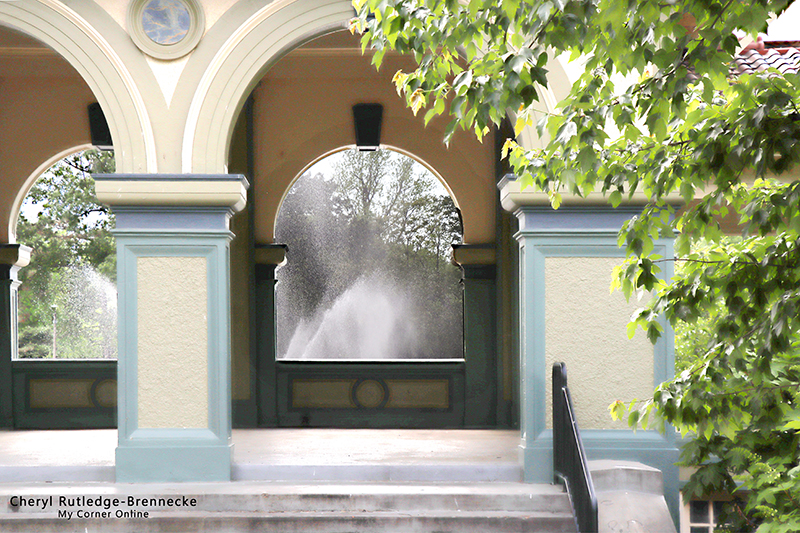
There was a sign that said Carondelet Park Boathouse as we approached the building and the fountain dancing through the open windows was a well laid out sight. Who thought of this when building the structure? It was so peaceful to stand at the windows looking out over the lake.
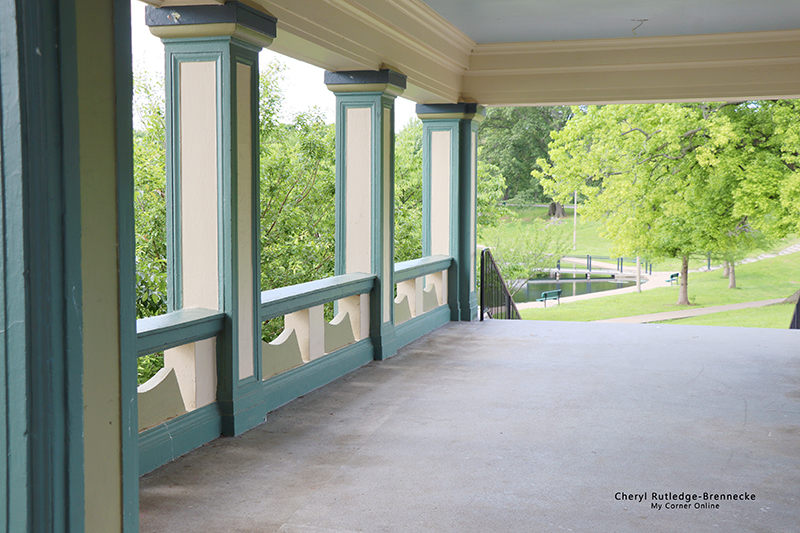
I really enjoyed the colors and shapes inside the boathouse. One can go right or left to walk through and out of the boathouse.
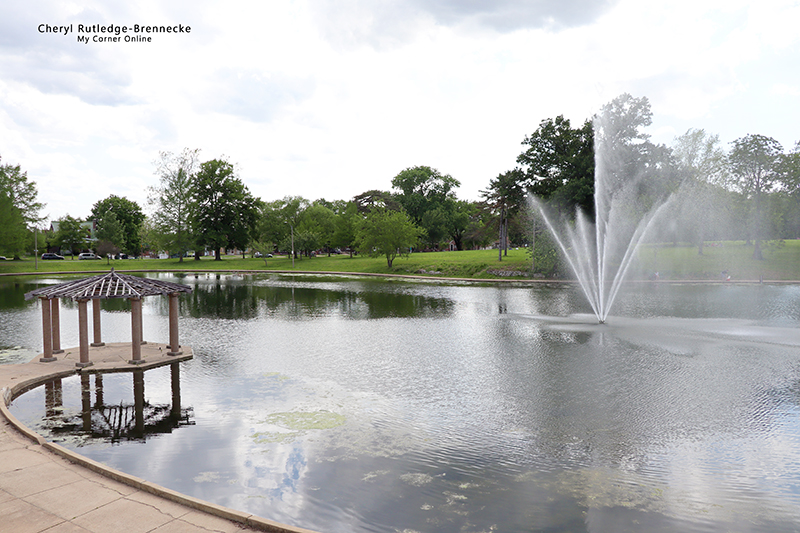
This is the boathouse lake. There was another pavilion jutting out into the lake which we walked toward.
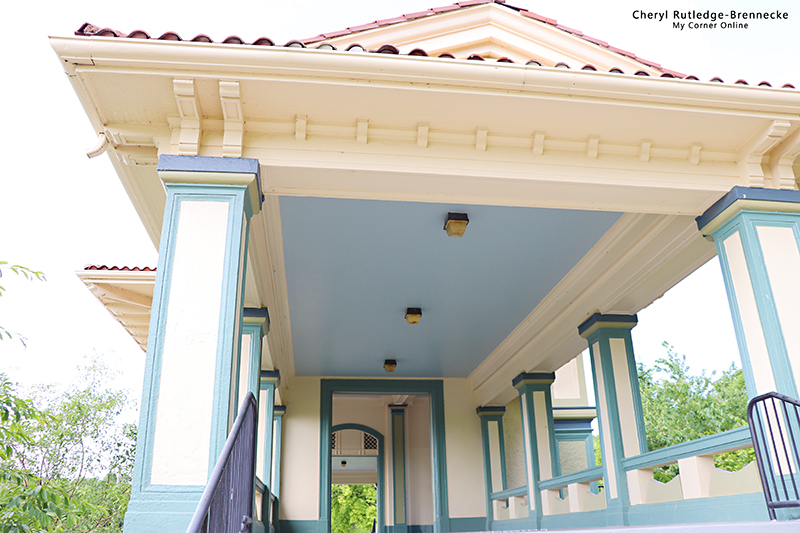
I turned around to snap another photo of the beautiful colors and walkway of the boathouse.
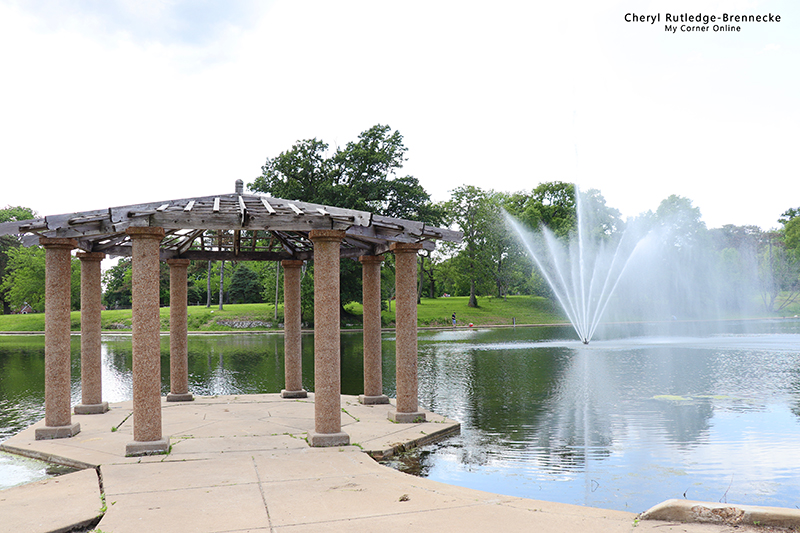
There were so many photo opportunities to enjoy!
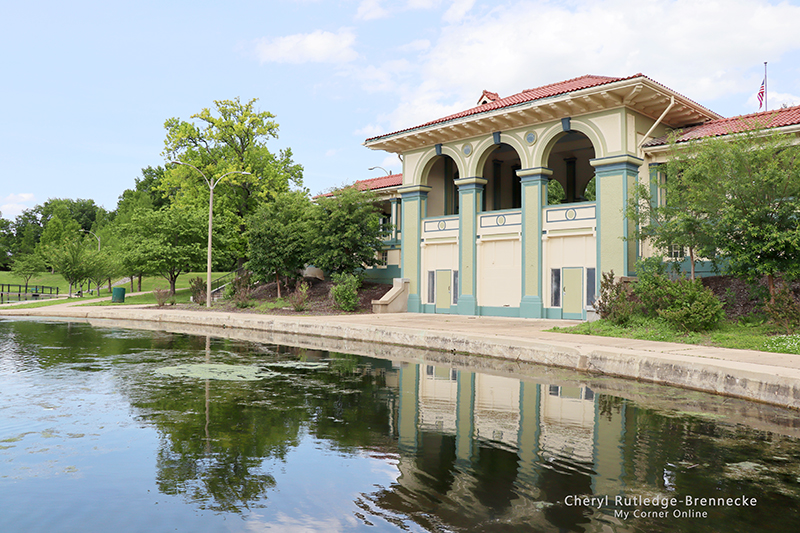
From the pavilion on the lake, I took this photo looking at the back side of the boathouse where we had just stood in the windows.
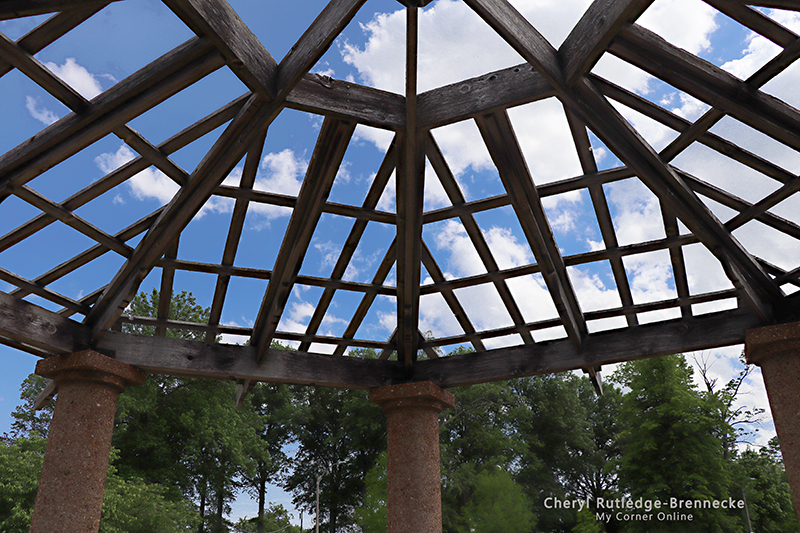
Oh, the lines! I love lines in photography and this is a photo looking up through the top of the pavilion on the Boathouse Lake.
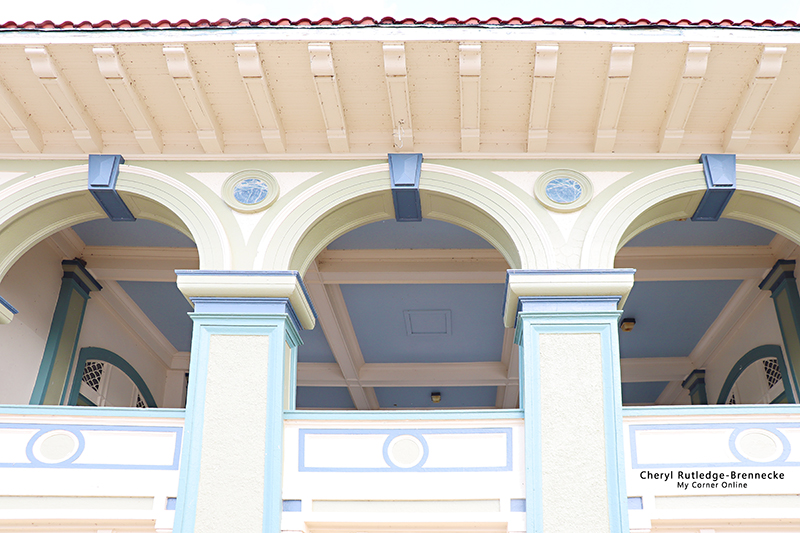
As we between the boathouse and the lake, I snapped another view of the windows.
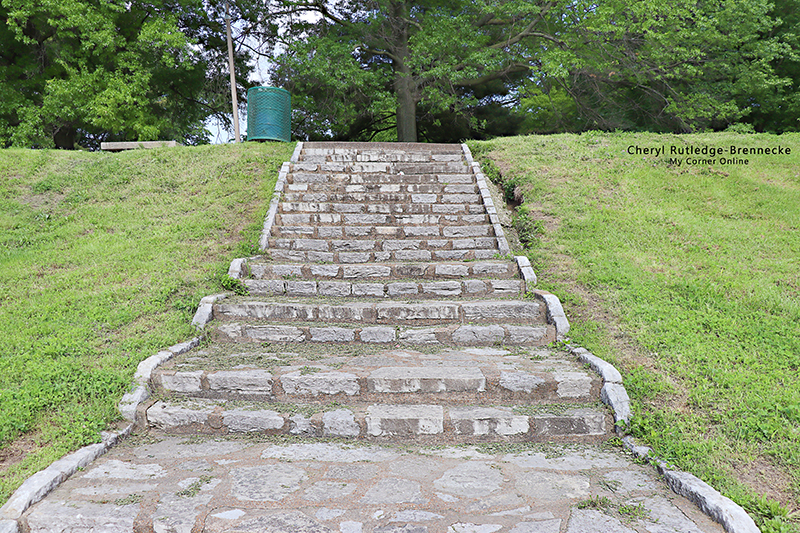
On the other side of the boathouse we found these stairs. They reminded me of something that might have been built during the Great Depression by the CCC.
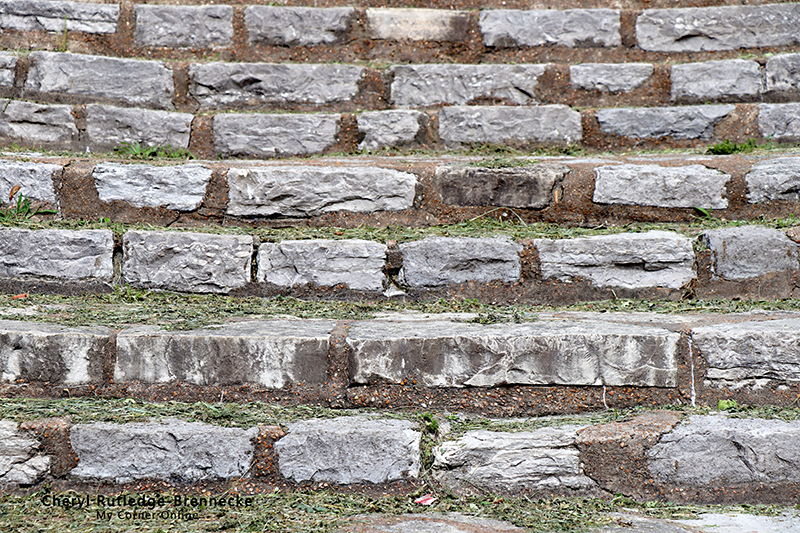
Oh, the textures and shapes of steps. Such a delight!
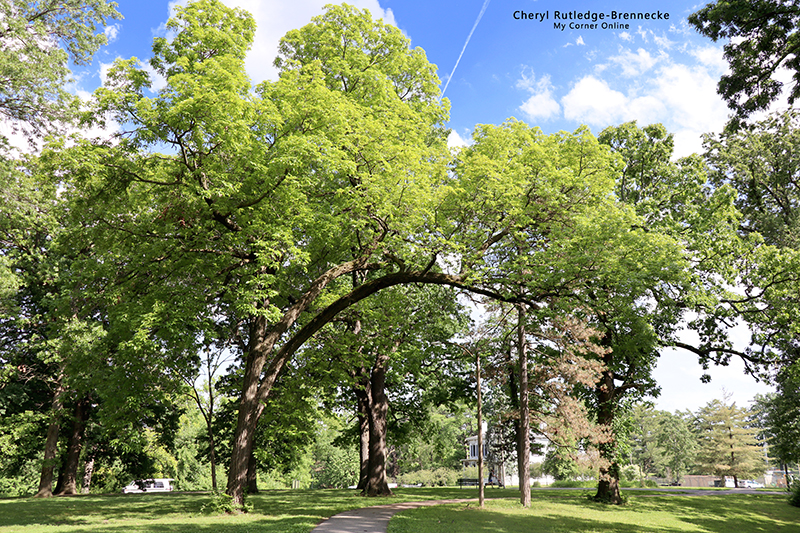
We walked back across the park to where we began. I wanted to explore the park more, but I can only stand so long on my feet. Instead of going to the car, we turned toward the top of the hill and corner of the park to see what the building in the distance was about. I took great delight at how this tree curved over the walkway.
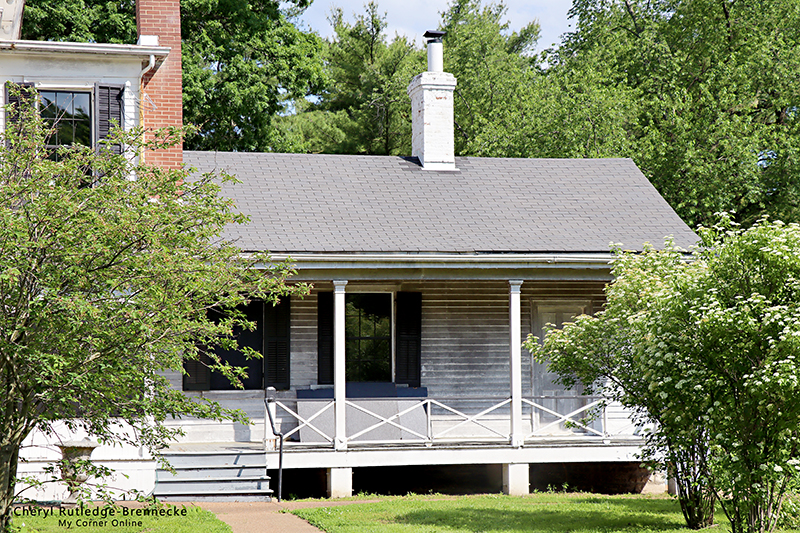
Across the street was an old house called the "Lyle house" and this was the back side of the house. I wonder the significance to the back end as it looks to be either the original part that was later added on to or the part that was for the help of the house.
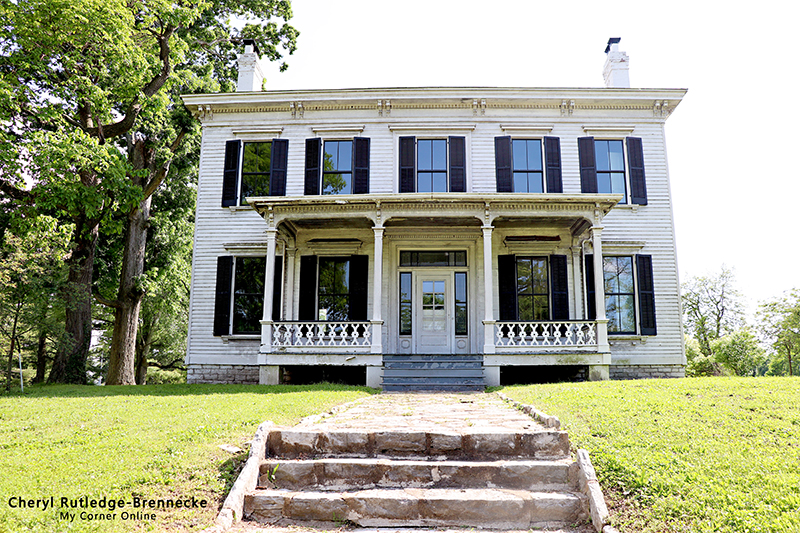
The Lyle Mansion was constructed in 1842 by Alexander Lacey Lyle and became city landmark #22 in 1971. Mr Lyle built the frame house on land given to his grandfather (Amos Custis Lyle) by the King of Spain. During the Civil War, the Lyle family mysteriously disappeared, probably due to pressures brought about by their southern sympathies. Parts of the land later passed to a cousin, the poet Eugene Field, and the famous Carondelet businessman Henry Blow, a former partner of Lyle. The Lyle property was acquired for a park for $143,000.
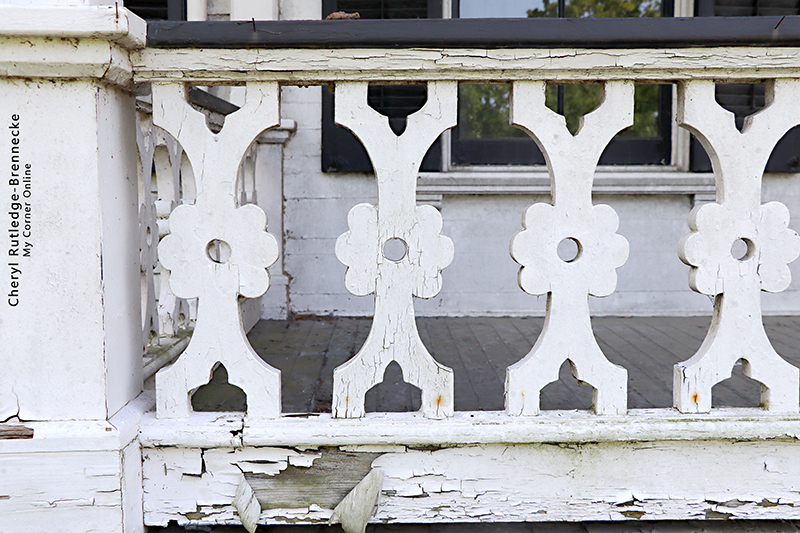
The house was closed for renovation and we were able to peak into the windows and walk around the building. I loved the shapes on the porch railing and the peeling paint.
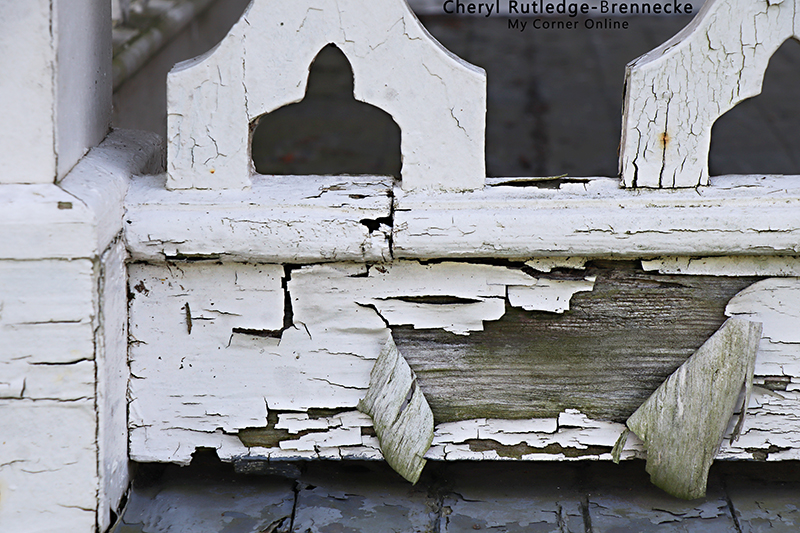
Yep! Oh the peeling paint! The textures!
There are so many walking trails at the park and the park is so much larger than we were able to explore, so it leaves something for us to come back and experience again.